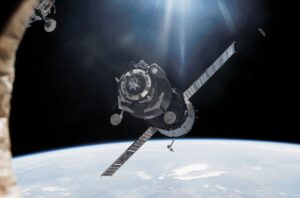New Delhi: India is poised to achieve a historic milestone in space exploration with the launch of ISRO’s Space Docking Experiment (SpaDeX) mission. Scheduled to lift off from the Satish Dhawan Space Centre in Sriharikota, Andhra Pradesh, at 10:00 PM IST on December 30, SpaDeX marks the final and most ambitious mission of 2024 for the Indian Space Research Organisation (ISRO).
This pioneering mission is a critical step toward India establishing its own space station, the Bharatiya Antriksh Station, by 2035. If successful, India will join an elite group of nations the United States, Russia, and China that possess the capability to dock spacecraft in space.

What is the SpaDeX Mission?
SpaDeX, or Space Docking Experiment, is designed to test and demonstrate the complex docking process between two spacecraft an essential technology for building and operating space stations. The mission involves two spacecraft, SDX01 (the Chaser) and SDX02 (the Target), each weighing 220 kilograms. The goal is for the Chaser to approach, dock, and interlock with the Target while both orbit the Earth at high speeds.
The mission, launched aboard ISRO’s reliable PSLV-C60 rocket, will place the spacecraft in a low Earth orbit (LEO) at an altitude of 475 kilometers with a 55-degree inclination. Following deployment, the two spacecraft will separate by approximately 20 kilometers over 24 hours, paving the way for the intricate docking maneuver expected in the first week of January 2025.
Why Docking is Crucial
Docking is one of the most challenging feats in space exploration. It requires precise control and alignment to ensure the spacecraft lock securely without causing damage. The process involves transferring power, data, and sometimes crew between the docked systems.
This capability is vital for India’s plans to construct its space station and future lunar missions like Chandrayaan-4. A successful SpaDeX mission will also enhance India’s Reusable Launch Vehicle (RLV) program by enabling docking with orbital platforms, similar to NASA’s iconic space shuttles.
Parallel Mission: POEM-4
 In addition to SpaDeX, ISRO will conduct experiments using the PSLV Orbital Experimental Module (POEM-4). This innovative approach involves repurposing the rocket’s spent fourth stage as a microgravity platform for research.
In addition to SpaDeX, ISRO will conduct experiments using the PSLV Orbital Experimental Module (POEM-4). This innovative approach involves repurposing the rocket’s spent fourth stage as a microgravity platform for research.
Microgravity Research POEM-4 will host 24 payloads, including experiments from ISRO centers, academia, and startups.
Robotic Arm Experiment payload featuring a robotic arm will simulate the capture of tethered debris, an essential skill for space station construction and space debris management.
Extended Experiment Duration unlike conventional missions, POEM-4 experiments will continue for up to three months, providing invaluable data for future space endeavors.
Currently, only the International Space Station (ISS) and China’s Tiangong Space Station serve as operational orbital platforms. The ISS is a collaborative effort led by NASA, ESA, and Roscosmos, while China independently developed Tiangong. India aims to establish its space station as the third major facility, advancing its stature in global space exploration.
The SpaDeX mission not only demonstrates India’s technological prowess but also sets the stage for ambitious projects like human spaceflights, interplanetary exploration, and orbital research facilities.
Future Implications
 As the world becomes increasingly dependent on space-based technologies, mastering docking procedures has strategic importance. The ability to dock spacecraft enables assembly and maintenance of space stations, refueling in orbit, and extended human presence in space.
As the world becomes increasingly dependent on space-based technologies, mastering docking procedures has strategic importance. The ability to dock spacecraft enables assembly and maintenance of space stations, refueling in orbit, and extended human presence in space.
The mission’s success will underscore India’s growing role in the global space race and foster international collaborations in space exploration.
ISRO’s SpaDeX mission represents a quantum leap in India’s space capabilities, taking the nation closer to its long-term vision of building the Bharatiya Antriksh Station by 2035. It is a defining moment for Indian science, a testament to the ingenuity and dedication of ISRO’s scientists, and a source of inspiration for future generations.
